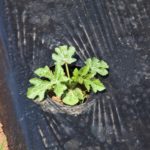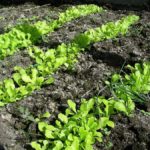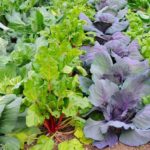Spring is coming soon! Here are some early spring tips for your garden.
 Warm Your Garden Before Planting
Warm Your Garden Before Planting
Pre-warm cold soil before sowing or transplanting warm-weather crops into the garden. Black or clear plastic sheeting is a simple and inexpensive way to warm the soil and get a jump on the growing season. Continue reading>>>
 Cold Frame to Jump Start the Season
Cold Frame to Jump Start the Season
Use a cold frame to start seeds early and harden off seedlings. A cold frame is a low, bottomless box with a clear glass or plastic top, that is set on the ground or over a sunken bed. A cold frame can extend your growing season by 1 to 3 months. Continue reading>>>
 Row Covers to Protect Plants from Early Chill
Row Covers to Protect Plants from Early Chill
Floating row covers and plant blankets are an easy way to protect crops from chilly nights and light frosts. They are commonly made of lightweight spun-fabric cloth such as Reemay which lets water and light reach plants but keeps the chill off plants and warms the soil. You can use row covers to get an early start in spring and to extend the season in fall. Continue reading>>>
 Vegetables for Growing in Containers
Vegetables for Growing in Containers
Because your container garden space is limited in size–including the depth of the soil for root growth–first, select a container that is big enough for the crop you want to grow, next choose crop varieties or cultivars that will grow well in containers. You will have success with vegetables that are described as “compact,” “bush,” or “dwarf.” Continue reading>>>
 Vegetable Crops for Beginners
Vegetable Crops for Beginners
Beginning vegetable gardeners can be easily intimidated by the scores and scores of vegetable seed varieties available from even the smallest seed retailer. In reality, there are hundreds of vegetable varieties available in garden centers and online each year. What to plant? Continue reading>>>
 No-Dig, No-Till Vegetable Gardening
No-Dig, No-Till Vegetable Gardening
A no-dig, no-till garden bed can be made by laying down layer-upon-layer of organic materials that will decompose themselves into a nutrient rich planting bed for vegetables. This no-dig, no-till method has been the basis of Chinese vegetable gardening for thousands of years. Continue reading>>>
 March Tips for Your Garden
March Tips for Your Garden
March is a month of great transition in the vegetable garden. In the warmest regions–United States Department of Agriculture (USDA) Plant Hardiness Zones 10 and 9–spring has arrived and planting can begin during March. In USDA Zones 8 and 7, preparation for spring planting can begin in earnest this month, but sowing and transplanting out into the garden may be delayed by continuing cold weather. In USDA, Zones 6, 5, 4, and 3, winter weather and cold temperatures will surely keep you out of the garden this month. Continue reading>>>






















